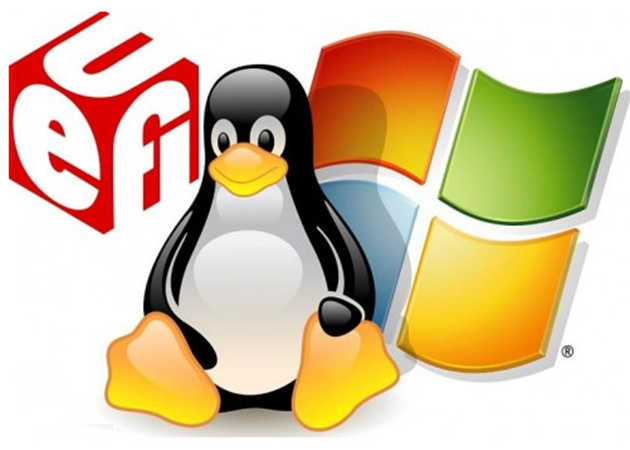What happens when you start your computer
It is a miracle that your computer starts at all. The term “booting” stems from the idea of “picking one’s self up by the bootstraps”. Try it sometime and you will immediately begin to get a message.
This is a basic idea of what happens when you hit that power button:
Your motherboard, hard drives, and all things electronic are furnished with that all-important commodity– electricity
Here’s where the miracle happens. A chip on your computer starts running a little program. In most cases this is a BIOS chip, but that is changing. The question remains, how does this program start running? I haven’t the foggiest idea. It’s like the chicken and egg conundrum.
In any case, this boot-up program starts checking for new hardware that may have been installed while the computer was turned off, it checks that all your RAM is in fine shape, it checks for a keyboard and mouse and any other peripherals you may have attached. It checks a lot more, but you get the idea.
Once it is satisfied that all is in working order, it runs another bit of code on your hard drive in an area known as the Boot Sector. The code there has the instructions necessary to fire up your operating system, whether it be Linux, Windows, or whatever.
When all goes well you will eventually find yourself in charge of an engineering marvel known as a computer. Or, HAL, depending on your relationship at the moment.
What is BIOS
Basic Input/Output System (BIOS) has been with us since the mid-70s, I think. This legacy system has many short-comings, not the least of which is the convoluted nature in which it is programmed.
- BIOS is not particularly easy to upgrade when a newer version has a feature that you “can’t live without”. And it is a risky business whenever you decide to “flash” a new version on your system. Any number of things can go wrong and in the worst-case scenario it can make your computer unusable.
- There is no clear-cut standard where BIOS is concerned. Many BIOS vendors provide their own particular extensions to the system and, over time, this has caused problems with interoperability.
- BIOS by its very nature is limited to 64K. This is downright puny and doesn’t offer any wiggle room for expansion, customizability, or adaptability.
To learn more, read about BIOS at this Wikipedia Page
What is UEFI
Unified Extensible Firmware Interface (UEFI) is the new kid on the block. It is fast-becoming the more popular method of computer boot systems. It handily improves on the old BIOS functionality and speed.
- UEFI offers a standardized interface. This is a distinct advantage if you must deal with several computers on a regular basis. BIOS interfaces are notoriously cryptic; what means one thing in a given BIOS system may not mean the same in another.
- If you feel the need to code, then UEFI is the way to go. It is written in the C programming language. BIOS is written in Assembly language and is not nearly as well documented by its authors. It is not uncommon for BIOS assembly language programmers to use undocumented procedures to “get around” a specific problem.
- UEFI is adaptable to the newest state-of-the-art hardware many will install in their computer.
- UEFI, due to its customizable nature, decreases boot time. It may only be measured in seconds, but for some reason, computer users seem to be obsessed with that tiny part of their lives.
- UEFI offers CPU-independent architecture and drivers
- UEFI offers a pre-operating system environment including networking capability
- UEFI can boot from 2+ Terabyte drives and GUID Partition Tables (GPT)
To learn more, a good source on UEFI can be found at this Wikipedia Page
Which is Better?
Obviously, UEFI is the better system based on the reasons offered in the above paragraphs.
Choosing which system to use is a tad more complicated.
Are you the person who wants to dig into the depths of your computer and tweak and write code? Then UEFI is a no-brainer.
If you want to keep things simple and don’t care about a few seconds delay in boot-time, then BIOS is probably the simplest route to take.
I have no personal experience with UEFI and can’t speak with true authority; I only know what I have read on the subject. I do know that my next system will have a UEFI boot system.
I am a devoted tweaker, after all,
Richard
—


If Richard is the author…..why use Dave’s CPU tricks?
Hi Ed on Facebook,
This is Richard. I am not a facade of Richard. This is not a test. I am truly Richard of the Nine.
I don’t understand. What am I missing? I don’t know what “Dave’s CPU Tricks” are
If there is a conspiracy at DCT, I damn well want to know about it. Enlighten me. Please! I have always been suspicious of my compatriots.
Please help me out here,
Richard
Hi Richard, I think the dots after ‘author’ is a type of code. 😉
I knew it!!!
They’ve been gunning for me all this time.
I need to perfect my ducking maneuver,
Richard
Viewers may be interested to know that the origin of the technical term “bootstrap” hails from WWII radar systems where a valve (radio tube) based electronic circuit performed a similarly impossible role.